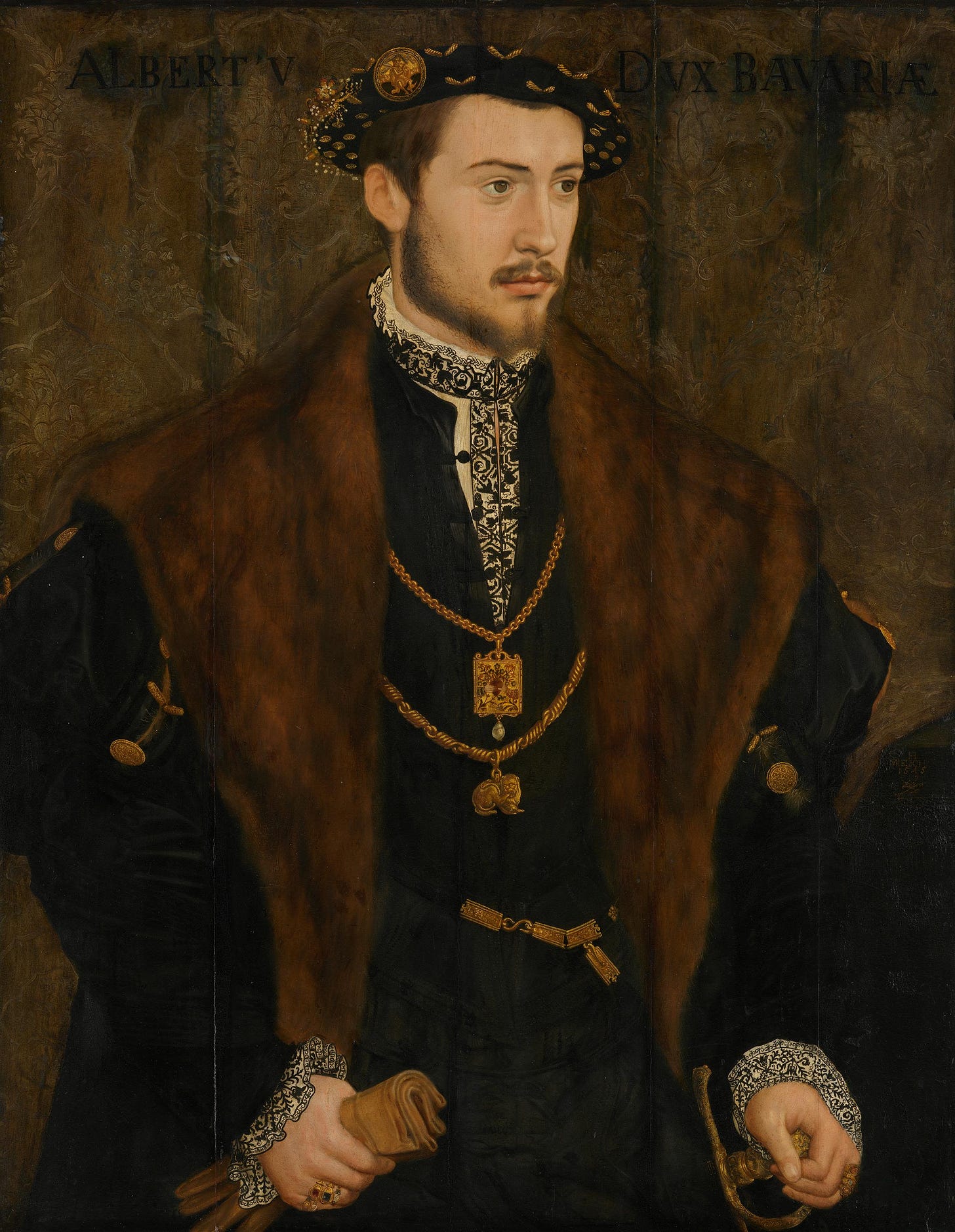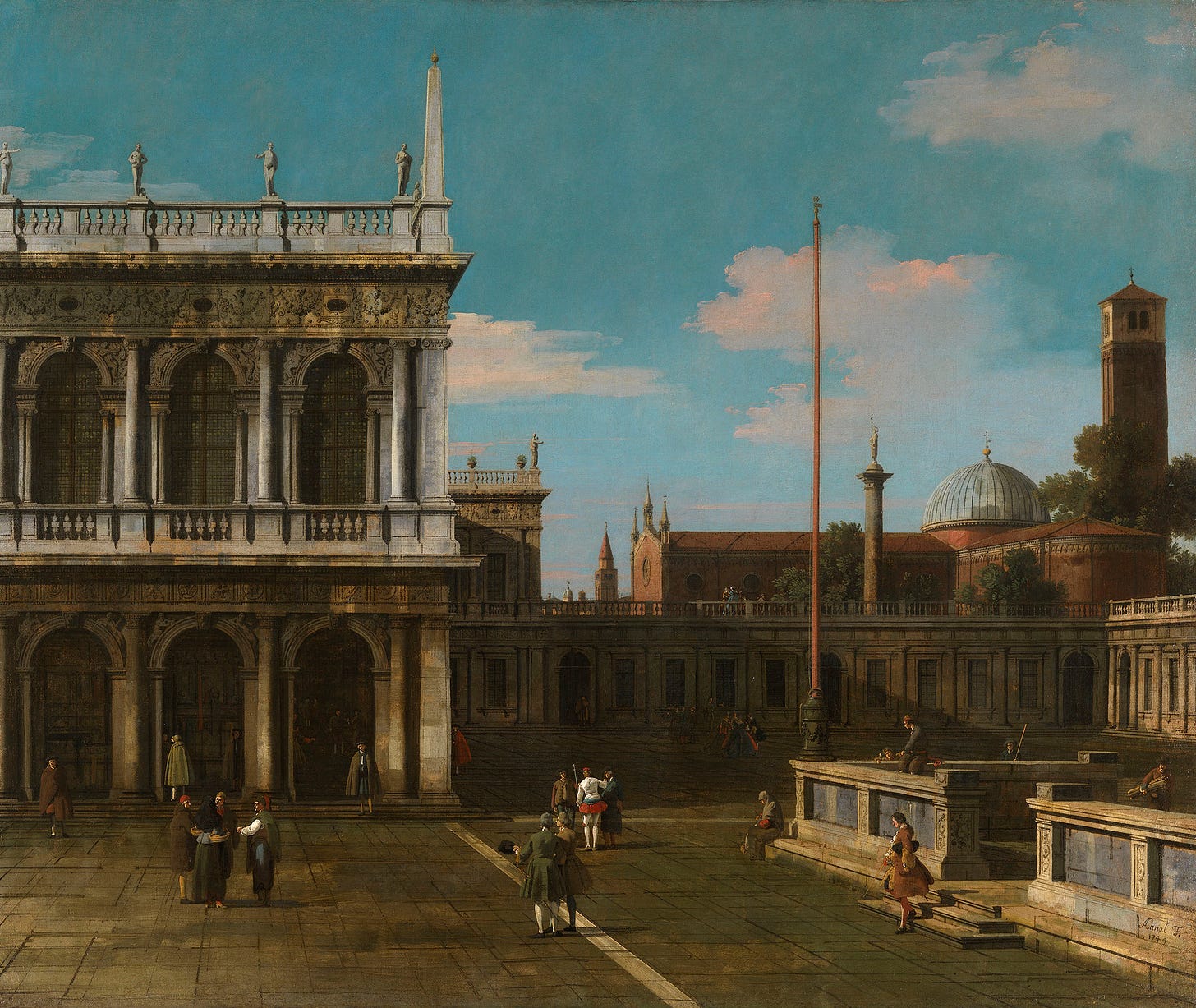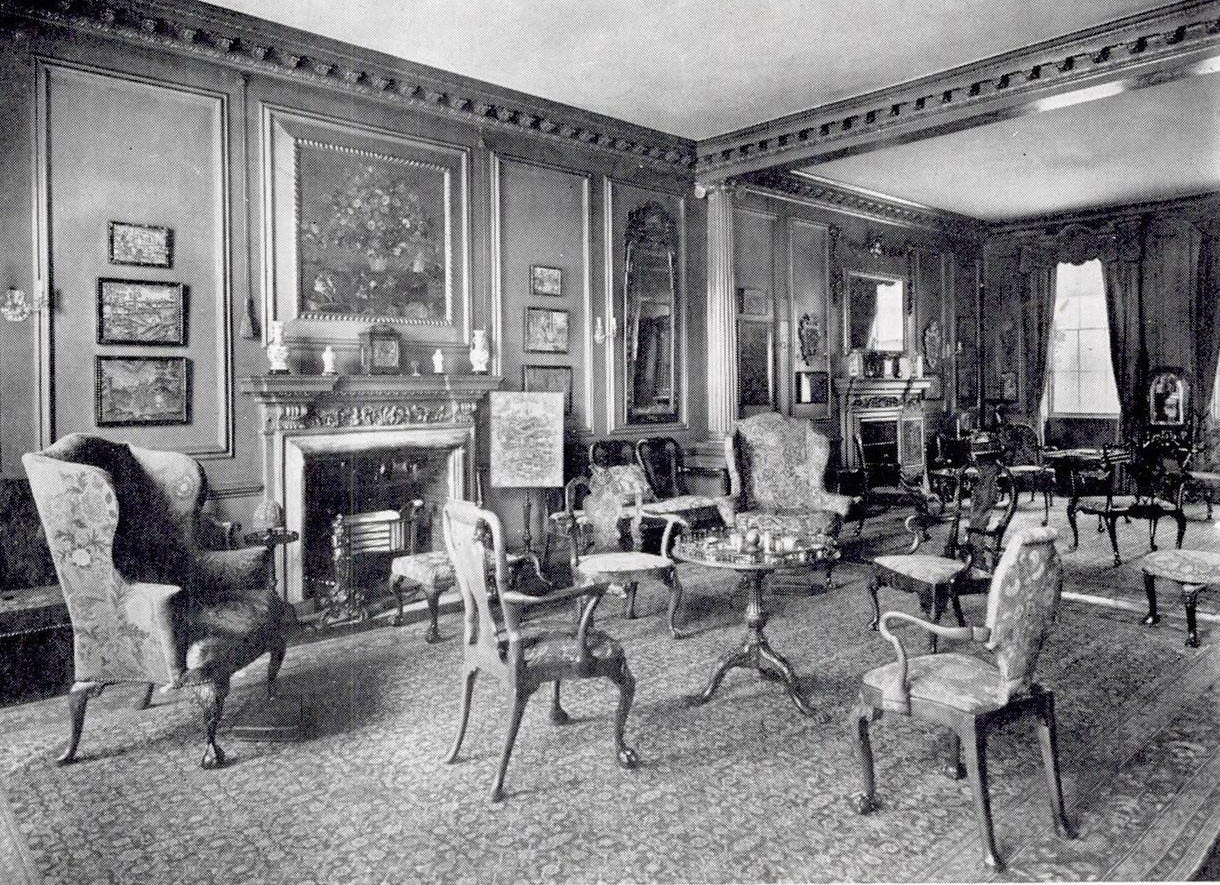Why collect at all? What is the point of buying old (or new), sometimes costly objects or pictures? When does one become a collector? Because we buy furniture to sit on and pictures to hang on our walls does that make us all, in some way, collectors? Or is there a higher bar to entry to the collectors’ club. Should one buy ‘high’ art to be considered a collector? How many objects of a certain type or types does it take to denote a collection? Is decoration or furnishing also a form of collecting? This is a subject which interests me so much that I have started a podcast, discussing the subject of collecting with curators, dealers, collectors and other specialists (details to come).
In A Question of Attribution, the marvellous short play by Alan Bennett which describes a fictional encounter between the late Queen Elizabeth II and Anthony Blunt, Surveyor of the Queen’s Pictures (from 1945 to 1973). While examining a painting thought to be by Titian, Blunt remarks to his assistant: ‘One lesson to be learned from paintings as indifferent as this, is that there is no such thing as a royal collection. It is rather a royal accumulation.’
Similarly, the great dealer of the early twentieth century, Joseph Duveen reportedly gently reprimanded his client Jules Bache ‘An accumulation is never a collection’1.
The implication meant by these two comments, is that the act of collecting is a deeply felt, conscious act, purposefully seeking out works of art of distinction or interest, either on the advice of experts or driven by personal impulse or motivation. How do we know when we are in the act of collecting or accumulating? Is there a line we cross when we stop accumulating and begin collecting? If we acquire objects for no use other than ornamentation does that count as collecting, or is ‘ornamentation’ an aim of accumulation, and ‘collecting’ driven by an ulterior motive? Are all of these questions epistemological and semantic navel-gazing? Perhaps. But then, there seems to me a hint of snobbery implicit in the two comments above, which irks me.
To consider these questions, I offer an abstract explanation for the collecting (or accumulating) impulse, which could be motivated by three contrasting, but not mutually exclusive, aims. The theory goes that the patron / collector / accumulator is motivated by one or all three of the following aims. First, the object of a collector / accumulator is to gain scientific knowledge, either of the world around us or about the object(s) acquired. Second, the purpose of the collector / accumulator is to seek beauty: as a way to embellish their surroundings, using objects to make their life more pleasant following their own set of highly subjective, personal preferences. Third, the purpose of the collector / accumulator is to build power : for social, economic or political influence. In the case of art (or perhaps what we broadly term ‘culture’), we might today call this ‘soft’ power, but power nonetheless. If you have read this far, congratulations, and I make no apology if you now consider me to be a Marxist (I’m not - but any consideration of power structures automatically invokes a Marxist interpretation).
It would be unusual to find a collection which exhibits a pure distillation of only one of these characteristics, instead I suggest that a mix of two or more of the three aims are usually found in any collection. Thus, let us apply these three motivations behind collecting in discussing very briefly four different types of assemblages to see if we can answer the question: when does a group of objects become a collection?
The Renaissance court and the 16th century kunstkammer

In 1565 Samuel von Quiccheberg (1529-1567), librarian to Albrecht V, Elector and Duke of Bavaria (1528-1579), wrote his famous treatise, Inscriptiones vel tituli theatri amplissimi, which describes the contents and organisation of an ideal museum. It reflects the general concepts which predominated in the late 16th century. Bringing together objects in the setting of a Princely court, these rather specialised types of collections were and are known as a ‘kunstkammer’ or ‘art chamber’. The composition of such a ‘chamber’ or museum was intended to reflect important areas of knowledge, and - according to Quiccheberg - should be divided into five branches as follows: 1. sacred history & genealogy, maps, paintings, portraits; 2. applied arts (eg sculpture, jewellery, furnishings, textiles, vases, coins etc); 3. natural history (plants, minerals, wax & clay objects etc); 4. technology / endeavour in the arts & sciences (eg tools, musical instruments, weapons, armour, clothing); 5. other paintings, genealogical trees, handicrafts. Under these five branches, 53 inscriptiones define the individual sub-categories of object. Such a detail (and rather impractical) arrangement points to a clear project to classify objects according to type. In the end Albrecht’s kunstkammer in the Munich Residenz was formed in a different way, but Quiccheberg’s Inscriptiones tell us about the Renaissance ideal of classification of objects in order to understand (ie knowledge) and to show mastery of the known world (ie power).
George III & Buckingham House

If the Renaissance concept of classification (as represented above) found its ultimate expression two centuries later in the foundation of the British Museum in 1753 - the world’s greatest ‘universal museum’ - eight years later another British national figure added to the Royal Collection in a surprising way. Having married Charlotte of Mecklenburg-Strelitz in September 1761, their coronation in Westminster Abbey taking place two weeks after their marriage at St James’s Palace, the new king and queen decided not to live in the old, rather decrepit Tudor palace of St James’s and instead bought nearby Buckingham House, planned as a family home and as a refuge from court life which continued at St James’s. In order to furnish their new home, George III asked his librarian Richard Dalton to find a collection of pictures to go on the walls. The British consul in Venice, Joseph Smith, who had acted as Canaletto’s agent, and was himself a collector, was willing to sell his paintings, medals and other works of art en bloc : in July 1760 a sum of £20,000 was agreed. Thus, in one fell swoop, George III bought sixty canvases by Canaletto, paintings by Zuccarelli, Rosalba Carriera, Marco Ricci, an enormous library of books, drawings and prints and numerous other treasures - including an important group of gems and cameos. Indeed one small Dutch picture which was thought at that time to be by the second rank artist Frans van Mieris the Elder, later turned out to be by Johannes Vermeer.
Because negotiations with Smith had opened in 1756 four years before George ascended the throne and married Charlotte, the counsel of John, 3rd earl of Bute (1713-1792) the prince (later king’s) advisor, cannot be discounted. Even so, George III’s motivations were presumably rooted in furnishing requirements, rather than a direct appreciation of Canaletto and other art. One could place this acquisition as one motivated by beauty: they needed pictures to go on the walls of their new house. Does this ‘accumulation’ of works for the splendid adornment of a private royal home count as a conscious act of collecting? George III was not known as a great lover of Italian or Dutch pictures, but he was no doubt aware that a royal residence required fashionable works of a stature or significance, and that Canaletto (and Consul Smith’s collection in toto) met that requirement; that the group was available at that time to purchase en bloc was no doubt another element in the decision to buy, and that perhaps could have been enough for him to make one of the great acquisitions for the Royal Collection.
Percival Griffiths and John Bryan

By the twentieth century, some private collectors were once again motivated by classification, much as their Renaissance predecessors had. In my own area of specialism, 18th century furniture, the collector of English carved furniture Percival D. Griffiths (1862-1937) continues to be a figure of admiration. His approach to collecting is interesting, as he was motivated to buy pieces which only appealed to him based on certain criteria which were explained and rationalised by his scholarly adviser, R. W. Symonds (an architect by profession). The principles by which furniture was assessed were simple : condition, form and colour. In order for a piece to be considered seriously, objects needed to satisfy Symonds’ and Griffiths’ high standards in respect of these three qualities. Condition would be assessed by close physical inspection, seeking repairs and alterations. Colour - or patination - was an entirely subjective assessment, as restorers are known to be adept at refinishing pieces in order to suit a particular collector’s preference, but nonetheless a perception of ‘beautiful’ colour was addressed and quantified for each piece under consideration. Finally, and perhaps most difficult of all was the assessment of form. Here, reportedly, Symonds and Griffiths would spend hours walking around a tripod table, assessing the curve of the leg, the confidence of the leaf-carving, the grip of the talons on the ball of the foot, the proportion of the top in relation to the base and so on. If these principles, presumably based on a close reading of available 18th century designs and securely dateable examples (of which there are very few), were satisified the piece would be purchased and joined Griffiths’ collection. After his sudden death in 1937, the masterpieces in his collection were dispersed by private sale and the rump sold at auction. Testament to this highly selective (and highly subjective) approach, pieces from Griffiths’ collection continue to command a premium whenever they appear on the art market today, and indeed the late John Bryan II, of Chicago, formed a significant collection of immense quality, guided in much the same way as Griffiths was guided by Symonds, including many significant pieces formerly owned by Griffiths. In this third example, collecting seems to be based on bringing together objects for an increase in knowledge (ie of different forms and types) and for beauty (in the critical assessment of form and colour).2
The Rothschilds
It is probably more frequent to witness in the formation of collections just one or two of the three suggested motivations behind collecting. However, the various branches of the famous Rothschild banking family, not uniquely, seem to have been motivated in their collecting instincts throughout the 19th century by all three motivations. And their legacy as collectors inspired others too, such as Richard Wallace, Henry Clay Frick, J. Pierpont Morgan and others. The extraordinary range of objects which are found in almost any of the great Rothschild assemblages betray a desire to develop an increase in knowledge of the objects, to beautify their princely homes and to demonstrate their wealth and economic power. Rothschild collecting is so fascinating and complex, it merits a separate discussion.
Conclusion
In a recent interview with James Stourton, I asked him why people collected and he referred to Kenneth Clark’s response when asked the same question to which Clark replied that people collect for as many reasons as they fall in love, no doubt said with a twinkle in his eye: Lord Clark was something of a collector of women himself. This may be true but doesn’t help us understand why some people do collect.
In 1943 Harrison Griswold Dwight, looking back across the art world of the previous forty years wrote of ‘the stormy human equations of collecting, the gnawing obsessions, stealthy pursuits, crushing disappointments, and intoxicating triumphs that lie in the background of the most beautiful things’ and this dramatic statement has prompted me to consider yet another approach to collecting.3
Indeed, my theory of just three motivations for collecting is perhaps far too neat and overly simple for such a tumultuous and often irrational human activity. This other angle I wish to explore (in another post) is a motivation which has seemingly increased with the onset of the remarkable pace of technological innovation throughout the second half of the twentieth century, perhaps it is even the case that the two are in some way connected : and this is the search for spirituality in art. Arguably, ‘spirituality’ could sit under my heading of ‘beauty’, but as beauty is here taken as skin-deep only (eg an appreciation of the drawing of a Botticelli Madonna, the form of a mahogany tripod table, or the shimmering richness of a rock crystal chandelier), it does not adequately cover the deep spirituality of so much art, especially post-war abstract art. For example, the emotions which Rothko’s paintings for the Seagram building evoke, or the cathedral-like space of Tate Modern’s turbine hall, particularly so when seen in 2003 with Olafur Eliasson’s light installation The Weather Project. But spirituality is for another time….
S N Behrmann, Duveen, 2014, p. 99
See C. Jussel and W. DeGregorio, English Furniture 1680 - 1760; English Needlework 1600 - 1740 The Percival D. Griffiths Collection (Volumes I and II), New Haven and London, 2022
H G Dwight, Art Parade: seeing the past forty years through the Art news and the Frick Collection, New York, 1943.






I realise I used the word Beauty incautiously as a cynosure for my friend’s collection. I don’t think he would say this actually. I think he feels he’s making up for lost time when nobody encouraged him to collect anything and he wants to be surrounded by art and antiques that gives him a sense of who he thinks he is. Kenneth Clark’s comment is in the preface to the Douglas Cooper edited book called Great Private Collections published in the 1960s. These of course were the varied collections of largely wealthy men. Clark does not really deal with the impulse to collect by those of lesser means, the lesser mortals who don’t just want to own ephemera, old LPs or bus tickets!
I think your article fascinating, Rufus, but there are a couple of points you don’t make but which I believe you omit. First, invoking Duveen is problematic. Behrman was a dramatist and satirist who turned a spiteful memoir by Duveen’s former lawyer Louis Levy into the rollicking bio we all know. It needs being treated with caution for its stories which Edward Fowles decided not worth overriding when shown the MSS as they made Duveen look like a genteel scallywag not a shrewd businessman. There is evidence in the Duveen Archive that Duveen initially helped collectors form concentrated collections for the prestige of the new owners, but also because it suited his business model. Later, even when his reliance on BB and other scholars began to wane somewhat mid 30s he was happy to promote variety in collections as more gemütlich for those people who loved owning beautiful things but weren’t driven by the need to only own say Italian Renaissance or 18th century French. Second, collectors are reliant on what appears on the market, whether they be whole collections dispersed via auction or through a dealer, or individual items found through many sources from flea markets to private sales from aristocratic collections. Third, collectors, like my best friend, collect beauty within a price bracket of affordability; my friend pushes his finances as far as he dare without bankrupting himself, but acquires occasionally very fine things that are not presently fashionable, or dealers and private collectors and agents may have missed. He’s certainly building his collections of glass, bronze, silver and pictures as a way of furnishing his home, but it’s constrained by the income of a civil servant and by the vagaries of the market, advice I provide as an art historian, and luck!